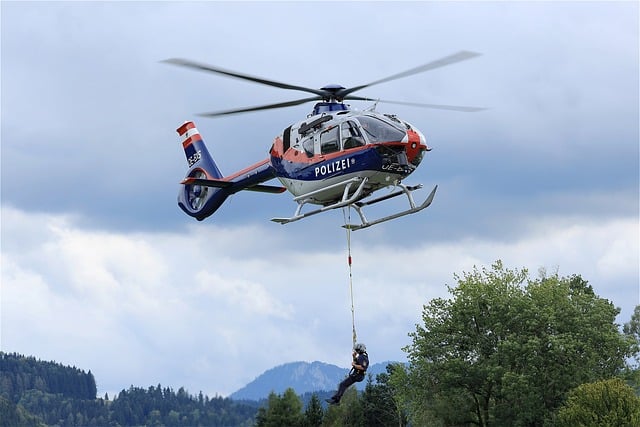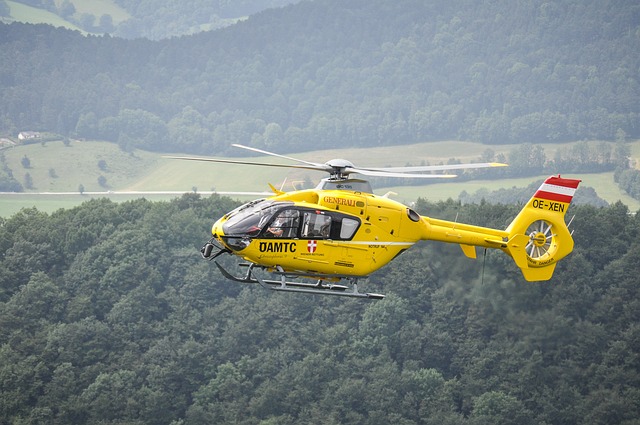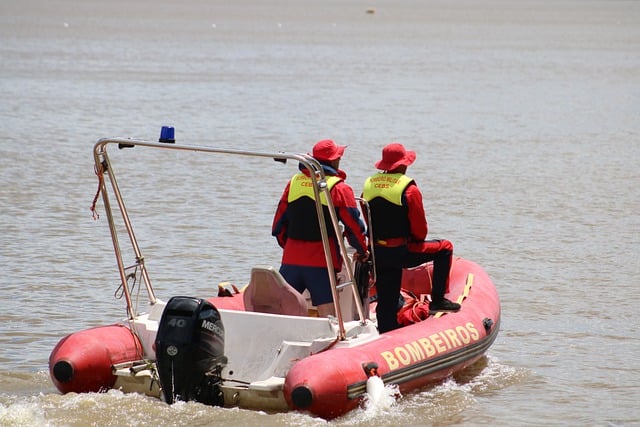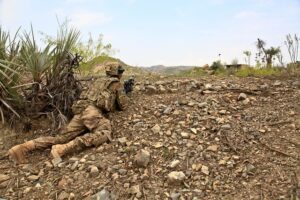
When darkness falls or shrouds treacherous terrain, tactical lights emerge as indispensable tools for search and rescue (SAR) teams. This article illuminates the critical role of flashlights for SAR operations, delving into their capabilities in hazard identification, the pivotal features that distinguish top models, and the technical aspects ensuring their effectiveness. We’ll explore beam distance and brightness, the lifeline of battery efficiency, the necessity of versatile modes, the resilience required in design, and real-world scenarios where these lights have proven to be life-savers. Understanding the interplay between technology and safety can enhance SAR missions, ensuring that every search is conducted with the utmost precision and care.
- Understanding the Role of Tactical Lights in Search and Rescue (SAR) Operations
- Key Features to Look for in a Tactical Light for SAR Teams
- The Importance of Beam Distance and Brightness in Hazard Identification
- Battery Life and Power Management: Ensuring Continuous Operation During Prolonged Missions
- Versatility in Modes: Strobe, SOS, and Spotlight Functions for Different SAR Scenarios
- Durability and Design: How Tactical Lights are Built to Withstand Harsh Conditions
- Case Studies: Real-World Examples of Tactical Lights Saving Lives in Search and Rescue Operations
Understanding the Role of Tactical Lights in Search and Rescue (SAR) Operations

Tactical lights have become indispensable tools in search and rescue (SAR) operations, serving as beacons that can illuminate the path to safety for those in dire need. Flashlights for SAR operations are designed with robust construction and high-intensity outputs to provide visibility in a wide array of environments, from dense forests to subterranean spaces. The versatility of these lights allows rescuers to navigate through darkness effectively, aiding in the identification of hazards such as unstable structures, treacherous terrain, or environmental obstacles that could hinder the operation. Their durability is matched only by their luminance, ensuring that even in the most challenging conditions, SAR teams can rely on their tactical lights to extend their operational capabilities into the night.
The role of tactical flashlights extends beyond mere visibility; they are instrumental in risk assessment and situational awareness during SAR missions. The targeted beam patterns of these lights enable rescuers to illuminate specific areas without causing disorienting glare, allowing for a thorough search without compromising their own safety or that of the individuals being assisted. Moreover, the long-lasting batteries and energy-efficient LED technology ensure that these tactical lights can provide consistent illumination over extended periods, which is critical when time is often of the essence in SAR operations. Flashlights For Search And Rescue Operations are not just pieces of equipment; they are tools for hope, guiding both rescuers and victims through the darkness until safety is found.
Key Features to Look for in a Tactical Light for SAR Teams

When selecting a tactical light for search and rescue (SAR) operations, it’s crucial to consider several key features that can enhance the effectiveness and safety of the mission. Firstly, the beam intensity should be powerful enough to penetate through dense environments or illuminate dark spaces where victims may be hiding. A high-lumen flashlight can serve this purpose effectively, allowing SAR teams to identify hazards and potentially life-saving signs quickly. Secondly, the light should offer various modes including a focused spot beam for long-distance signaling and a flood beam for broader area illumination, which can be essential when assessing the extent of an incident or when searching in cluttered environments.
Additionally, durability is a non-negotiable factor; the tactical light must be built to withstand harsh conditions and rough handling, as SAR operations often take place in challenging terrains and unpredictable weather. Impact resistance, waterproofing, and a sturdy construction are key attributes that ensure the flashlight remains operational even when subjected to rigorous use. Furthermore, the tactical light should have a reliable battery system with multiple power settings to manage energy consumption effectively, minimizing the risk of power depletion during critical operations. Lastly, an intuitive user interface, including easily accessible switches and modes, allows for quick adjustments in response to changing situations, making Flashlights For Search And Rescue Operations an indispensable tool for SAR teams operating under pressure.
The Importance of Beam Distance and Brightness in Hazard Identification

In search and rescue operations, having a reliable tactical light is paramount for identifying hazards promptly. The beam distance of a flashlight directly impacts the user’s ability to see potential dangers at a distance. A longer beam distance allows first responders to assess situations from afar, reducing the risk of injury or exacerbating conditions. This is especially critical in environments where visibility is low, such as darkened buildings, caves, or dense forests. The further one can see, the better they can prepare and navigate around obstacles or dangers, making beam distance an essential factor for flashlights used in these high-stakes scenarios.
Brightness, another crucial aspect of tactical lights, is equally important in hazard identification. A brighter light can illuminate smaller details that might otherwise go unnoticed, revealing trip hazards, sharp edges, or the presence of wildlife. The luminosity provided by a high-quality search and rescue flashlight not only helps in mapping out the immediate surroundings but also in performing tasks that require fine motor skills under low light conditions. In situations where every detail can be vital for a successful operation, the brightness of the flashlight becomes a key differentiator between a safe outcome and a potentially dangerous one. Flashlights with adjustable brightness settings are particularly advantageous, as they allow rescuers to conserve battery life by using lower light settings when detailed work is needed, and crank up the intensity when scanning large areas or identifying hazards at a distance.
Battery Life and Power Management: Ensuring Continuous Operation During Prolonged Missions

When operating under the high-stress conditions of search and rescue missions, reliability of equipment is paramount. Tactical lights designed for such operations must offer extended battery life to ensure continuous operation, especially when navigating through unpredictable environments that can last for hours or even days. Advanced power management systems within these flashlights regulate energy consumption efficiently, allowing rescuers to rely on a steady beam when identifying hazards or signaling for support. These systems often include features like low battery indicators and multiple output settings, which help in managing power without compromising on illumination. The ability to switch between different modes of operation, such as a bright maximum output for distant visibility and a dimmer setting for extended runtime, is crucial for prolonged missions where conservation of battery power is essential. Flashlights For Search And Rescue Operations are specifically engineered to withstand the rigors of this demanding work, providing a dependable source of light that can adapt to various scenarios, from dense forest searches to urban rubble operations. The integration of high-capacity batteries and energy-efficient LED technology in these tactical lights not only extends their operational duration but also maintains a balance between brightness and power efficiency, making them indispensable tools for rescue personnel in the field.
Versatility in Modes: Strobe, SOS, and Spotlight Functions for Different SAR Scenarios

Flashlights for search and rescue (SAR) operations serve as indispensable tools for teams navigating unpredictable environments. Their versatility is exemplified by the variety of modes available, each tailored to suit specific scenarios within SAR missions. The strobe function, for instance, is invaluable when disorienting subjects is necessary, or when signaling to other team members over long distances during nighttime operations. This rapid flashing light not only aids in communication but also assists in maintaining the visibility of rescuers in smoke-filled or foggy conditions, enhancing safety for both the respondents and those in need of assistance.
In addition to the strobe, SAR flashlights often include an SOS mode, which is a visual distress signal that can be easily recognized by fellow rescue workers or passing aircraft. This feature allows rescuers to quickly communicate their location and intentions without the need for complex signaling devices. Furthermore, the spotlight function offers high-intensity illumination critical for locating individuals in areas with dense underbrush or in situations where precise light application is required, such as searching through crevices or examining objects of interest. The combination of these modes within a single flashlight streamlines a responder’s toolkit, ensuring they are equipped to handle the diverse challenges presented during search and rescue operations.
Durability and Design: How Tactical Lights are Built to Withstand Harsh Conditions

Tactical lights are meticulously engineered to endure the most demanding environments, making them indispensable tools for search and rescue operations. These robust devices are constructed with high-strength aerospace-grade aluminum or durable polymer materials, ensuring they can withstand the rigors of outdoor use. The hard-anodized finishes not only resist corrosion but also provide a non-slip grip, crucial for operators when their hands may be wet or covered in grime. The lens is often made of virtually unbreakable polycarbonate, offering clear visibility without added weight.
Furthermore, tactical lights are designed with ingress protection (IP) ratings that guarantee they remain functional even after exposure to dust, water, and other particulates. O-rings and gaskets seal the battery compartment and lens to prevent moisture intrusion, a feature that is essential when operating in wet or humid conditions. Impact resistance is another hallmark of these lights; they are built to withstand drops from significant heights without compromising performance. The LED emitter, at the heart of these flashlights, is shielded by a robust lens, ensuring continuous operation even under the harshest conditions. These features collectively make tactical lights an invaluable asset for search and rescue teams who must navigate through unpredictable terrains and environments, providing reliable illumination to identify hazards and ensure the safety of both rescuers and those in need of assistance.
Case Studies: Real-World Examples of Tactical Lights Saving Lives in Search and Rescue Operations

During search and rescue operations, tactical lights serve as indispensable tools for identifying hazards and saving lives. Their critical role is underscored by numerous case studies where flashlights for search and rescue operations have been instrumental in locating individuals in perilous situations. For instance, a hiker lost in dense foliage during twilight hours was found promptly when rescuers used high-intensity tactical lights to cut through the gloom, guiding their way and illuminating potential dangers such as unstable terrain or hidden crevices. Similarly, in a nocturnal operation to rescue stranded climbers on a mountain face, the focused beams from these devices not only provided visibility but also revealed ice patches and rock overhangs that could have been fatal obstacles. The durability of these flashlights, often built with robust materials to withstand harsh environments, complements their brightness, making them reliable companions in the most challenging of searches. These real-world examples exemplify how tactical lights equipped with high-output LEDs can be a matter of life and death, enhancing situational awareness and enabling quick decision-making in critical situations.







